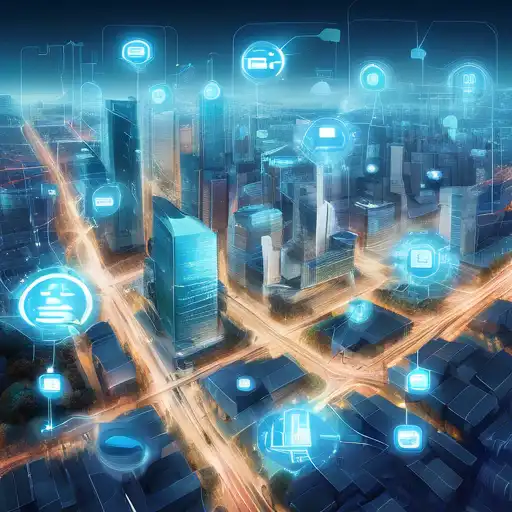Introduction to IoT in Smart Cities
The Internet of Things (IoT) is revolutionizing the way urban areas operate, making cities smarter, more efficient, and more sustainable. By integrating IoT technologies, smart cities are able to harness real-time data to improve infrastructure, public services, and the quality of life for their citizens.
Key Components of IoT in Smart Cities
At the heart of smart cities are several key IoT components that work together to create a seamless urban experience. These include:
- Sensors and Devices: These collect data from the environment, such as air quality levels, traffic patterns, and energy usage.
- Connectivity: High-speed networks enable the transmission of data between devices and central management systems.
- Data Analytics: Advanced algorithms analyze the collected data to identify trends, predict issues, and optimize city operations.
- User Interfaces: Dashboards and apps allow citizens and city officials to interact with IoT systems, providing feedback and accessing services.
Benefits of IoT in Smart Cities
The implementation of IoT in urban areas offers numerous benefits, including:
- Enhanced Public Safety: IoT devices can monitor crime hotspots and alert authorities to potential incidents in real-time.
- Improved Traffic Management: Smart traffic lights and sensors reduce congestion and improve flow, cutting down on commute times.
- Energy Efficiency: Smart grids and meters optimize energy use, reducing waste and lowering costs.
- Environmental Monitoring: Sensors track pollution levels, helping cities to take proactive measures to protect the environment.
Challenges and Considerations
Despite its advantages, the integration of IoT into smart cities is not without challenges. Privacy concerns, cybersecurity risks, and the need for significant investment are all factors that must be addressed. Cities must also ensure that IoT solutions are inclusive, benefiting all citizens equally.
Future Prospects
The future of IoT in smart cities is bright, with advancements in technology paving the way for even more innovative applications. From autonomous vehicles to AI-driven urban planning, the possibilities are endless. As cities continue to grow, IoT will play a pivotal role in shaping sustainable, efficient, and livable urban environments.
For more insights into how technology is transforming urban living, explore our articles on digital transformation and sustainable cities.
